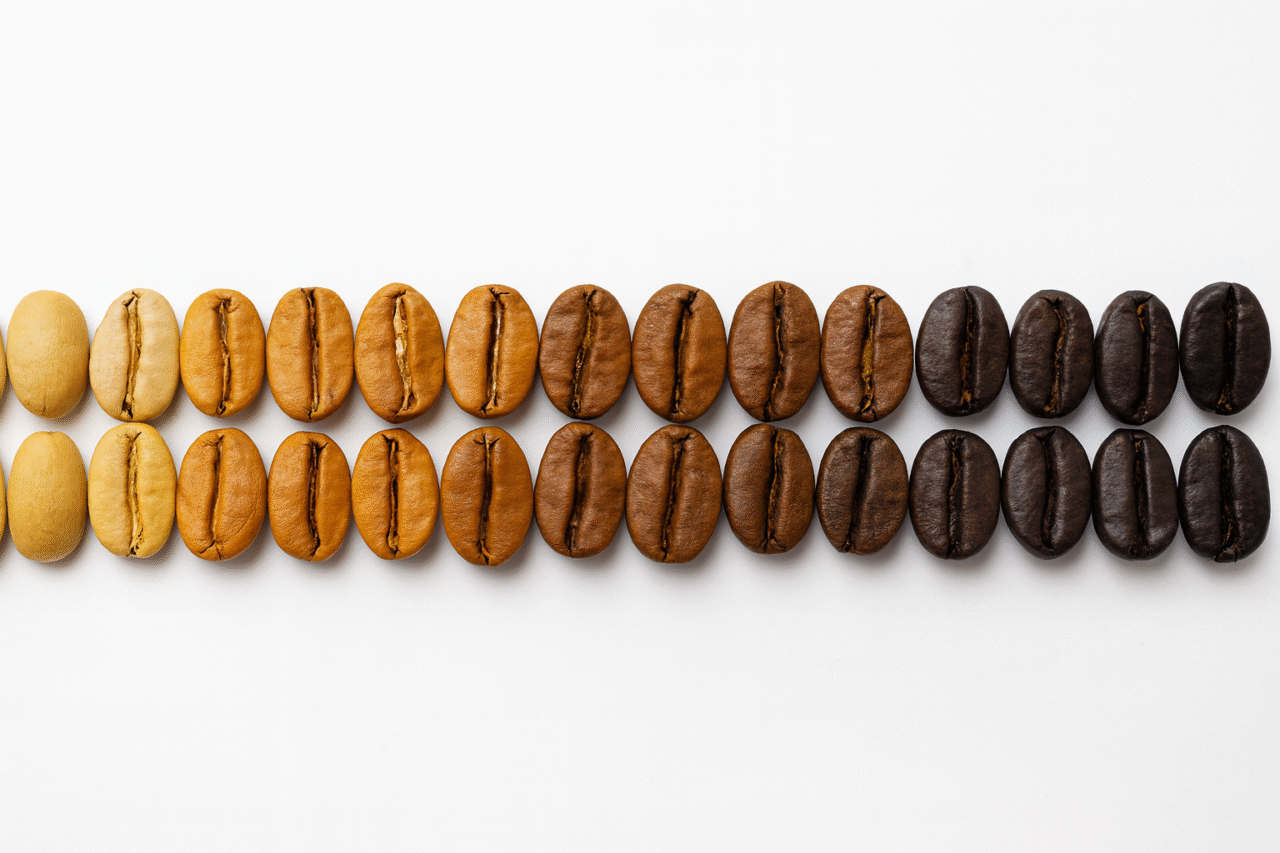Dubai, July 31, 2025 (Qahwa World) – In a major leap for coffee science, researchers at the University of California, Davis, have discovered that all Arabica coffee—regardless of origin or roasting method—follows the same trajectory of color change during roasting. Published in Scientific Reports, this breakthrough introduces a “universal roasted coffee color curve” that could redefine how the coffee industry measures roast levels.
Color: More Than Just a Visual Cue
Color is one of the most important indicators of coffee roast level and quality, long relied upon by roasters, cuppers, and consumers alike. Traditionally, roasters have used visual inspection or analog references like SCA color tiles and Agtron disks to assess roast degree. But such methods are often subjective, inconsistent, and influenced by lighting, perception, and sample variation.
The UC Davis team—led by Dr. Irwin Donis-González and colleagues—sought to solve this challenge using data science and commercial-scale roasting. They systematically roasted 663 coffee samples across seven distinct roast profiles using beans from three origins (Uganda, Indonesia, and El Salvador) and processed by wet and honey methods.
The result? No matter the roast style—fast, slow, or extended Maillard—or the bean origin, the roasted coffee always plotted along the same path in the CIELAB color space (L*, a*, b*). In other words, coffee color during roasting is not chaotic—it’s mathematically predictable.
What Is the Universal Color Curve?
The “universal roasted arabica coffee color curve” is a mathematical model showing how coffee color evolves over time during roasting:
-
L* tracks lightness (from 100 = white to 0 = black),
-
a* shifts from green to red,
-
b* shifts from blue to yellow.
As coffee roasts, L* decreases, a* peaks then falls, and b* follows a similar arc. These changes are closely tied to Maillard reactions, which form melanoidins—the compounds responsible for browning and flavor complexity.
Importantly, the team observed consistent Lab* values at key roast milestones—color change, first crack, and second crack—across all samples. For example:
-
L* at first crack: ~29.7
-
L* at second crack: ~19.9
This means a coffee’s visual color at these points can serve as a universal reference for roast level, regardless of how it was roasted.
Implications for the Coffee Industry
This discovery has wide-reaching implications:
-
✅ Standardization: The curve offers a potential industry-wide framework to define “light,” “medium,” and “dark” roasts quantitatively, solving long-standing inconsistencies across brands and countries.
-
✅ Quality Control: Roasters can use objective data to calibrate and reproduce roast profiles more accurately.
-
✅ Instrument Calibration: Devices like Agtron, ColorTrack, and RoastVision can potentially align their scales to a shared reference curve.
Moreover, this model opens the door for real-time roast monitoring using color sensors and data-driven roasting systems, enhancing precision without sacrificing artisan control.
How Universal Is It, Really?
To validate the curve’s universality, the researchers conducted a meta-analysis of 20 previous studies involving different coffee types, origins, postharvest methods, and roasting equipment. Over 392 Lab values* were compared.
Remarkably, over 96% of data points from other studies fell within 3 units (ΔE)* of the UC Davis curve—meaning imperceptible or minor visual differences. Even Robusta coffees and baked goods like bread followed similar paths, underscoring the robustness of the color trajectory during Maillard reactions.
Only a handful of outliers—often from studies with unusual roasting methods or poor documentation—deviated significantly.
Caveats and Next Steps
While groundbreaking, the study’s scope focused on:
-
Arabica only (no Liberica or decaf),
-
Specialty-grade beans free of defects,
-
Commercial-scale roasting with 5 kg batches.
Future research may explore whether lower-grade coffees, aged greens, or decaffeinated beans exhibit different color behavior. Researchers also call for collaborations with industry to define consumer-facing standards for roast color, including sensory mapping and color-language guidelines (e.g., “reddish-brown,” “chestnut,” etc.).
Conclusion
The “universal roasted coffee color curve” is more than a scientific curiosity—it’s a transformative tool that brings objectivity to the art of coffee roasting. For an industry still dominated by subjective cues, this model could be the first step toward global consistency, better transparency, and smarter roasting.
As the specialty coffee world matures, innovations like this signal a new era where data, tradition, and flavor harmonize.
Explore more breakthroughs in coffee science at QahwaWorld.com
Stay ahead with the latest in roast technology, quality standards, and scientific insig
